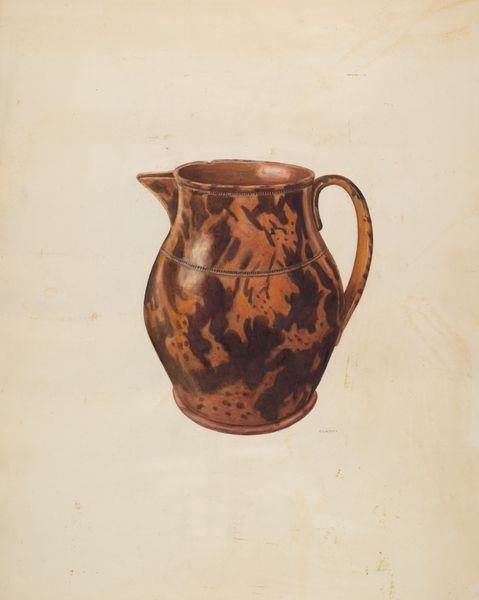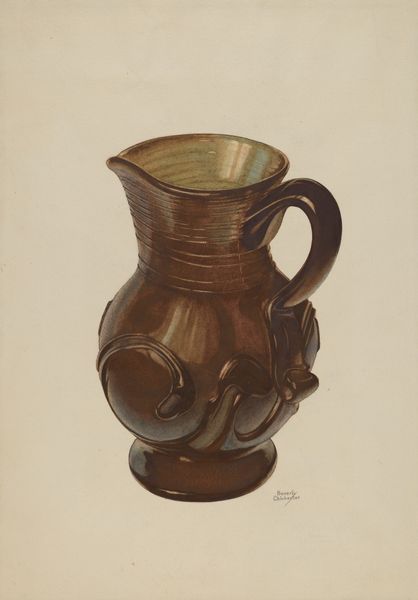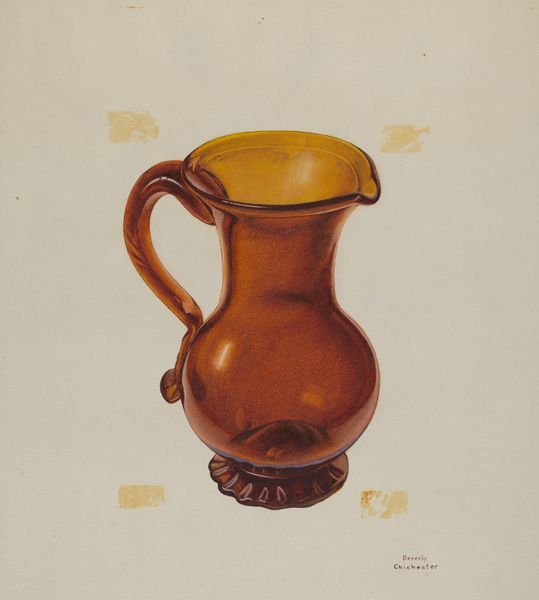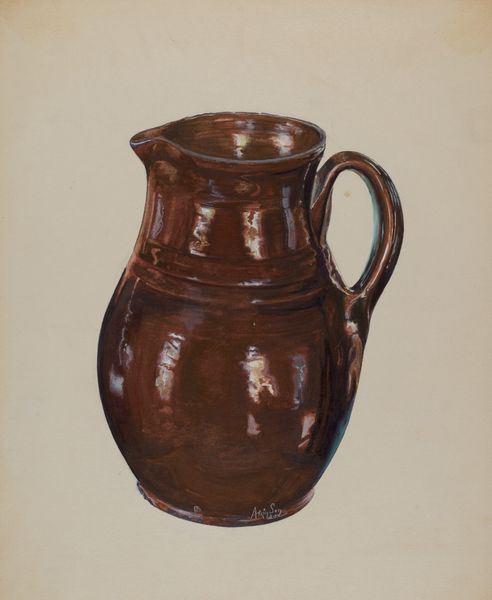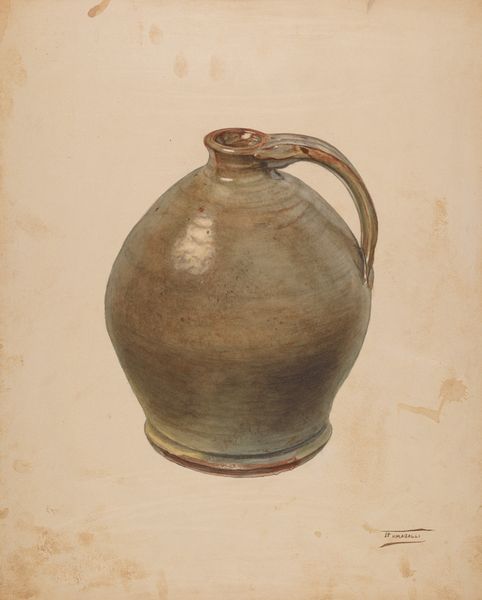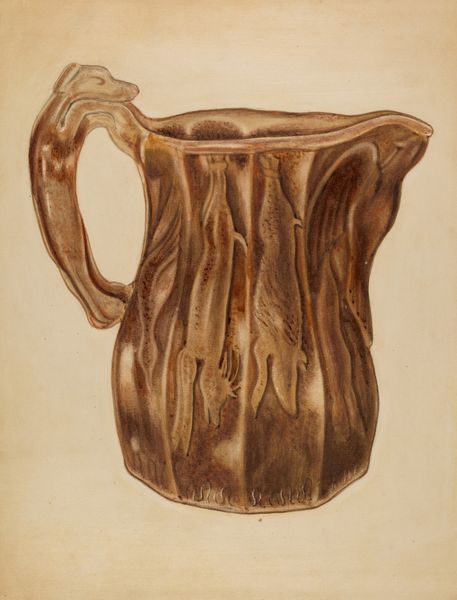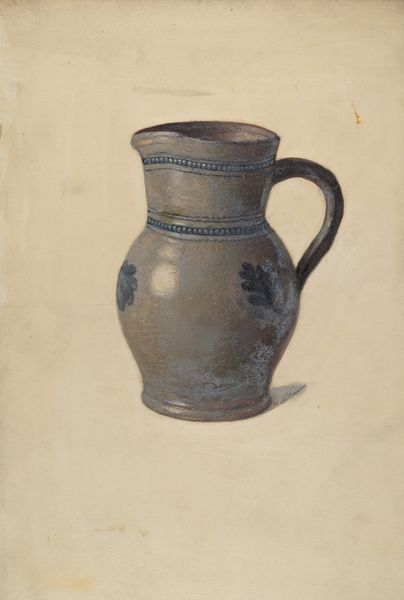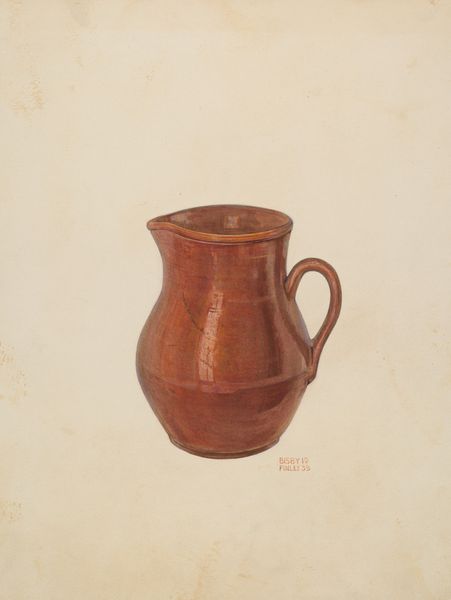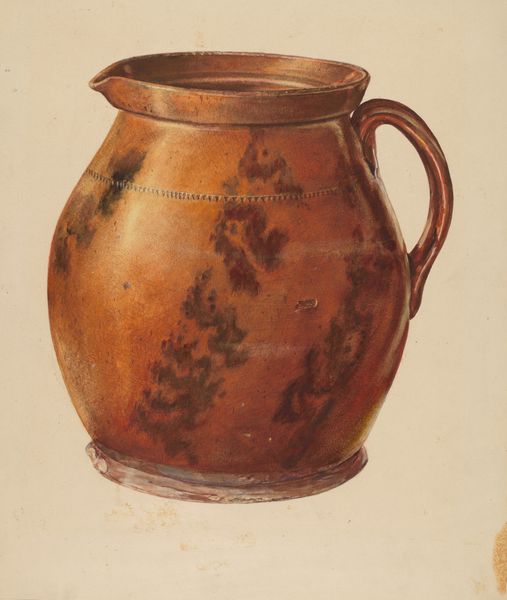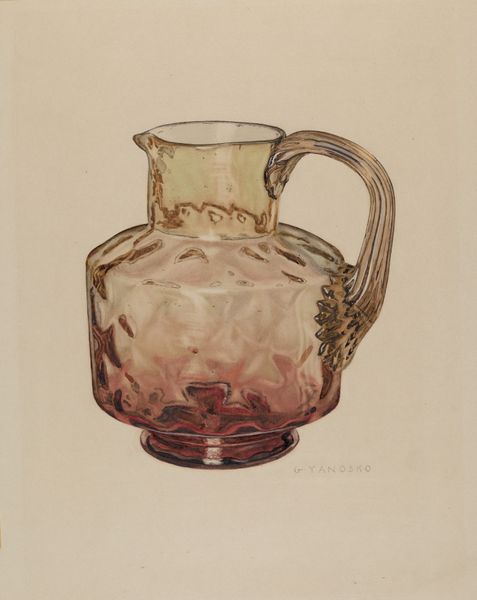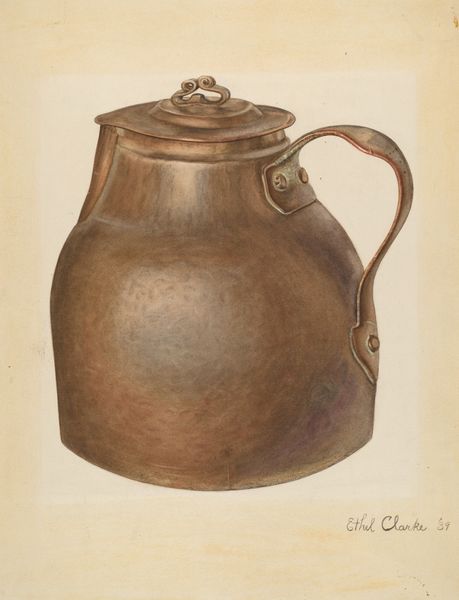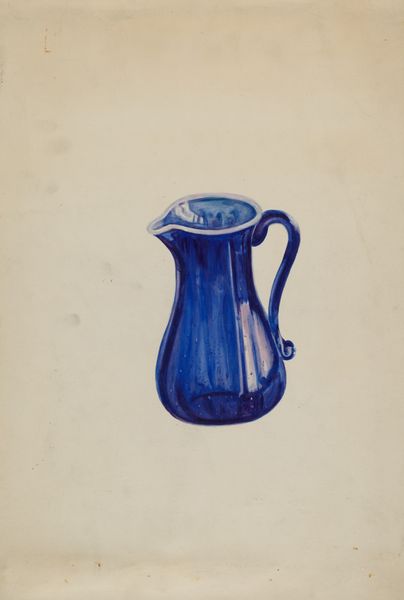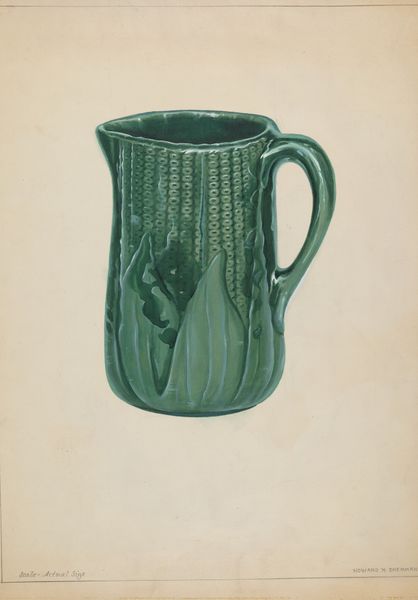
drawing, painting, watercolor
#
drawing
#
painting
#
oil painting
#
watercolor
#
genre-painting
#
watercolor
#
realism
Dimensions: overall: 30.4 x 22.8 cm (11 15/16 x 9 in.) Original IAD Object: 6 3/8" High 4 "High
Copyright: National Gallery of Art: CC0 1.0
Curator: Good morning. Today, we’re looking at Ralph Atkinson’s "Pitcher," likely completed around 1936, an oil and watercolor piece that offers a glimpse into genre painting through the lens of Realism. Editor: Immediately, I’m drawn to the slick, reflective surface of the pitcher. The artist seems to revel in capturing the nuances of light dancing across this ordinary, functional object. Curator: Absolutely. Observe how Atkinson employs a high degree of verisimilitude in rendering form. The interplay between light and shadow meticulously models the pitcher's curvature, imbuing it with volume. It almost begs to be analyzed through the structures of light and space alone, divorced from its utility. Editor: But isn't the utilitarian nature key? This is an everyday object, rendered with a material sensibility that belies its mundane purpose. Think about where the pigments came from, the crafting of brushes, the preparation of the canvas, the very physical act of representing an object so intrinsic to domestic life. Curator: Perhaps, but that focus neglects the formal relationships established by the artist. The curve of the handle mirrors the vessel's body, creating a compositional harmony. The subtle ornamentation near the handle—the floral motif—disrupts an otherwise rigid symmetry. There is also a tonal range which imbues the subject with grace. Editor: I agree the compositional elements create a visually compelling still life. Still, the pitcher suggests narratives of production and consumption. Was this mass-produced? Hand-crafted? Its sheen hints at industrial processes, yet the hand of the artist insists on individual perspective, labor and subjective representation. Curator: That perspective offers a new understanding of genre art beyond representational values. The painting itself functions as a sort of cultural artifact, inviting questions about artistic and aesthetic intent. Editor: Right, and as a reflection on the means of production in that time. Its reflective surface hints not just at light, but at a society structured around consumption, echoing the craftsmanship inherent in our domestic settings. Curator: It gives the work another interesting point to explore. Thank you for pointing out some other important qualities of this particular object. Editor: And thank you for highlighting the underlying structure. An insightful, multi-layered experience indeed.
Comments
No comments
Be the first to comment and join the conversation on the ultimate creative platform.
